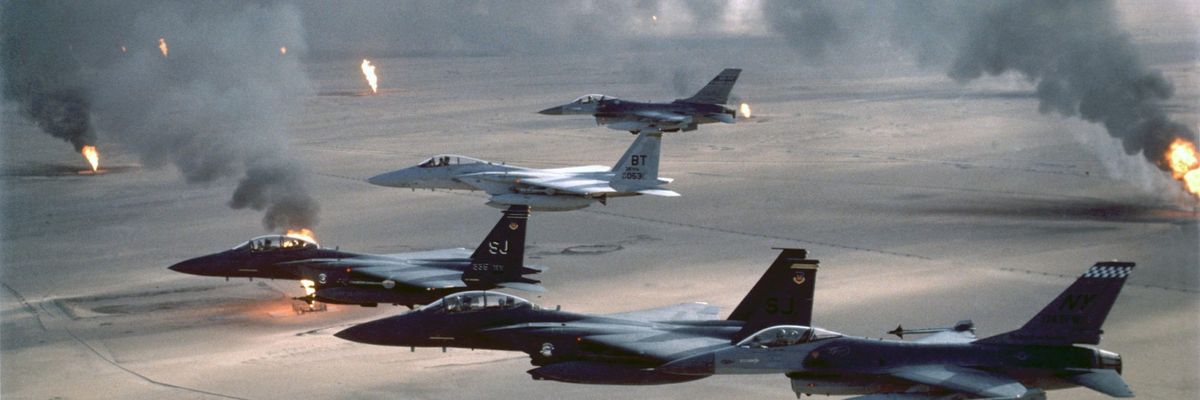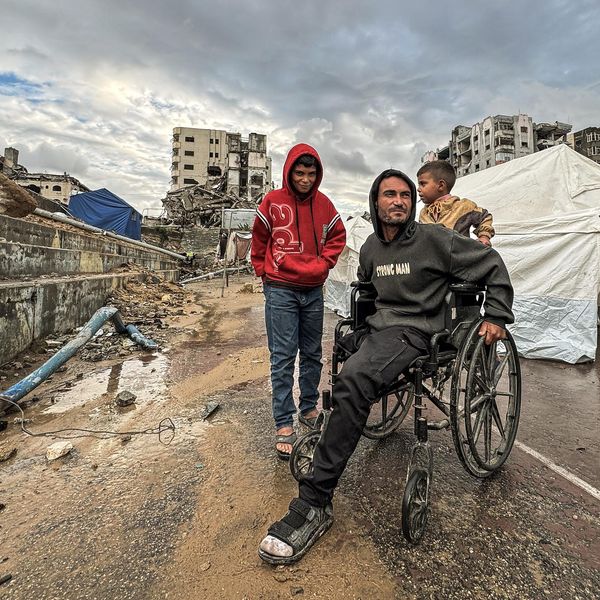From Ukrainian President Volodymyr Zelensky to former NATO Commander Philip Breedlove, there are growing calls for the Biden administration to impose a no-fly zone in Ukraine as a way to protect civilians there and destroy the Russian air offensive that has largely grounded the Ukrainian air force and is doing so much damage to the Ukrainian army.
On Tuesday** a group of 27 foreign policy analysts and former government officials, including Philip Breedlove, the former Supreme Allied Commander in Europe, released an open letter that stated that a “U.S.-NATO enforced No-Fly Zone to protect humanitarian corridors and additional military means for Ukrainian self-defense are desperately needed, and needed now.” The letter says nothing about the risks of its recommended course of action.
Implementing a no-fly zone of any sort, whether for all of Ukraine or “just” to protect humanitarian corridors and Ukrainian defensive systems, would mean that the U.S. Air Force would essentially become the Ukrainian air force, fighting alongside Ukrainian ground forces against Russia.
President Biden is right to resist these requests. At a recent press conference, White House spokesperson Jen Psaki gave a succinct answer as to why the administration has no intention of implementing a no-fly zone over Ukraine — because it would be an act of war:
“The no-fly zone . . . would require, essentially, the U.S. military shooting down Russian planes and causing a — prompting a potential direct war with Russia . . . the exact step that we want to avoid.”
In an interview with NPR, Philip Breedlove acknowledged the dangers of a no-fly zone, but argued for one nonetheless. But looked at closely, many of Breedlove’s points are reasons not to proceed with such a risky course:
“[W]hat Jen Psaki said is absolutely correct. A no-fly zone, if it is truly a military no-fly zone, is essentially an act of war because that means you are willing to enforce it, meaning those who violate it you would shoot at . . . [and] if there are defense systems in the enemy's territory that can fire into the no-fly zone, then we normally take those systems out, which would mean bombing into enemy territory.”
Writing in War on the Rocks, retired Air Force Col. Mike Pietrucha and soon-to-retire officer Mike Benitez further underscore the danger of a no fly-zone, noting that “a no-fly zone is not a military half-measure. It is a combat operation designed to deprive the enemy of its airpower, and it involves direct and sustained fighting.”
Shooting down Russian planes and bombing Russian anti-aircraft sites would greatly increase the risks of escalation, up to and including a nuclear confrontation. That’s reason enough not to go forward, regardless of how loud the demands to do so may be. As Breedlove himself noted in his NPR interview, “We are very reticent to have a war with a nuclear power that is already talking about using nuclear weapons” — a dramatic understatement if there ever was one.
Administration critics who advocate for a no-fly zone routinely understate the risk by arguing “we’ve done it before” — in Iraq, Bosnia, and Libya. But in those cases U.S. opponents had little or no capability to shoot down U.S. aircraft or take out U.S. anti-aircraft systems. Russia is capable of doing both.
The calls for a no-fly zone are a new indication of just how far a belief not just in U.S. unilateral dominance but U.S. invulnerability have become the default mode of thinking for some U.S. politicians and soldiers — despite the bitter lessons of Iraq and Afghanistan. Nobody thought that way during the Cold War; and if we are now engaged in a new cold war with Russia, we desperately need to remember the lessons of the old one.
If the U.S. Air Force put forth its full strength (including stripping U.S. forces in the Middle East and Far East of reserves), it could probably prevail eventually against Russian aircraft in the skies over Ukraine, though at severe cost. The greatest threat however would be Russian S-300 and S-400 ground-to-air missiles. The latest version has a maximum range of 400 kilometers, which means that they can cover most of Ukraine’s territory while remaining based within Russia.
Therefore, in an air war with Russia, there would inevitably be heavy casualties among U.S. air crew. Some would be captured by Russia, giving Moscow leverage in any future negotiations over an end to the war in Ukraine. Many more would be killed. To eliminate this threat would necessitate destroying the missile launching sites, not only in occupied parts of Ukraine, but in Russia itself.
Given the extreme risks to U.S. pilots of attacking targets in Russia, there would be an overwhelming argument for U.S. cruise missiles to be employed instead. Russia would then very likely retaliate using its own missiles to destroy both U.S. missile sites in Europe and the air bases in Poland and other countries from which U.S. aircraft were operating.
Russia would probably not fire missiles at bases in America itself; but it would be very surprising if it did not use its powerful fleet of nuclear and conventional attack submarines to launch attacks on U.S. naval targets.
At this point, we would have reached the point that during the Cold War, generations of sensible U.S. and Soviet leaders took the greatest care to avoid: two nuclear superpowers, with the capacity between them to annihilate not just each other but the whole of humanity, exchanging missiles.
This would begin with conventional missiles; but the chances of this turning deliberately or more likely accidentally into nuclear conflict would be appallingly high. We should not forget the occasions during the Cold War when only the wisdom and caution of one U.S. or Soviet officer averted catastrophe. These likely consequences of a no-fly zone are entirely evident to sensible U.S. and European military analysts.
We also need to consider the political consequences of a no-fly zone for the Western alliance. NATO’s European members have introduced surprisingly tough economic sanctions against Russia, and European publics have demonstrated overwhelming sympathy for Ukraine; but we should not forget that all of this is completely risk-free in physical terms. No serious West European politician is advocating a no-fly zone, precisely because they can see the probability of this leading to missile exchanges on the continent of Europe.
This means that if Washington did indicate that it was seriously considering a no-fly zone, the immediate consequence would very likely be a split in NATO. It is extremely likely that the Germans, French, and other European governments would prevent their bases being used for this purpose. This would make it very hard to deploy the U.S. forces necessary.
For all these reasons, a no-fly zone over Ukraine would risk becoming one of the most disastrous foreign policy decisions ever taken by a U.S. administration.
** Editor's note: This story was updated on 3/8/22 to include new developments.
















